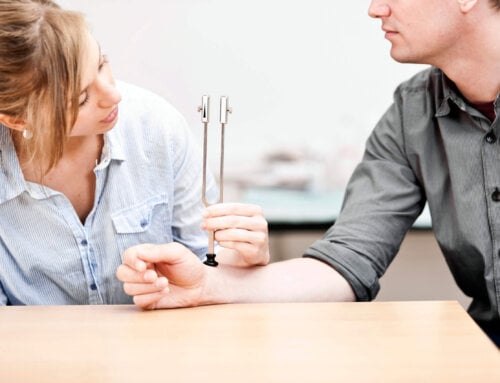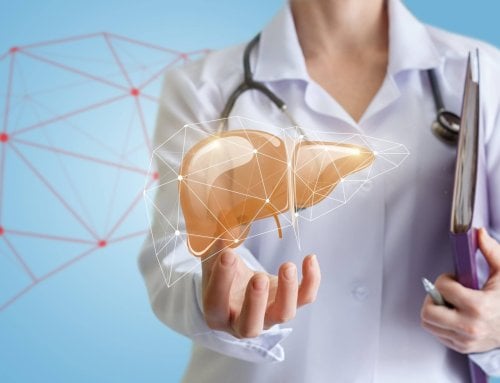I recently educated a middle-aged male patient with diabetes during diabetes management sessions who was suffering from a cardiac issue of which he had no understanding. This poor patient was “in the dark” about what was happening to his heart and he felt too intimidated to ask the real important questions. His diabetes had been diagnosed after the heart condition although his physician indicated that he probably had diabetes for years and it caused his “atrial fibrillation” condition, since the diabetes was never recognized and was uncontrolled. Given that cardiovascular disease is a major risk factor of diabetes, I thought this was a good time to review his specific condition, atrial fibrillation, to clarify some much needed information.
My Doctor Said I Have Atrial Fibrillation and I Could Have a Big Stroke. What Does That Mean?
- Atrial fibrillation (A-fib) is a type of arrhythmia or irregular heartbeat. Over 2.7 million Americans suffer with atrial fibrillation. This number will increase as our population ages. Many patients have no symptoms and are unaware that they have A-fib until they have a physical exam and EKG. Usually the 4 chambers in the heart: the atria (upper chambers) and the ventricles (lower chambers) beat in an organized and timed fashion. The heart contracts and relaxes in a controlled manner.
- With A-fib, the atria beat chaotically or in a quivering manner which could cause shortness of breath, rapid heart rate, lack of energy, severe fatigue, heart palpitations, funny sensations in the chest, nausea, light headedness and generalized weakness.
- People who have diabetes for an extended time, especially when uncontrolled, are at a greater risk of A-fib. 40% risk increase of this specific arrhythmia for people with diabetes.
- Other risk factors for A-fib besides diabetes include: hypertension, being over 60, coronary heart disease, cardiomyopathy, cardiac surgery, and prior heart attacks.
- According to The American Heart Association “untreated A-fib doubles the risk of heart related deaths”. It can lead to heart failure and cardiomyopathy, the most serious heart conditions.
- One of the major complications of A- fib is the formation of blood clots. When blood clots form in the heart, it causes a myocardial infarction or heart attack. Blood clots to the brain cause a stroke. 20% of strokes victims have pre-existing A-fib. Both of these conditions are higher in those with diabetes. Blood clots can occur in the lungs called pulmonary embolism or in a limb called an embolism. Blood clot formation can obstruct blood flow leading to ischemia or death of the tissue.
What are possible causes and triggers of A-Fib?
In addition to diabetes, other possible causes/triggers can be:
- hyperthyroidism
- obesity
- hypertension
- recent cardiac surgery
- sleep apnea
- alcohol ingestion
- caffeine/energy drinks
- right/anxiety
- dehydration
- women’s hormones-menstrual cycles
- OTC cold and flu remedies / OTC supplements
Which physician should I consult?
Atrial Fib can be intermittent or permanent. You should always have it checked out since it can lead to other serious medical complications. Generally, a cardiologist is the specialized physician to consult with but there are also cardiac electrophysiologists which offer even more specific treatment for cardiac arrhythmia and the treatments.
How is A-fib diagnosed?
- Complete physical exam and history
- A discussion of possible symptoms
- Complete Blood Count (CBC)
- Electrocardiogram
- Echocardiogram
- Stress/echo combination test
- possibly a regular exercise stress test
- Ambulatory Holter monitor
What are the current treatments for Atrial Fibrillation?
- There are several aspects to be addressed in the treatment of A-fib. It usually includes slowing and controlling the heart rate to 110 beats per minute (since it is very rapid and irregular). This usually requires a medication called a beta blocker which slows the heart rate.
- Anticoagulants or blood thinners are used to reduce the risk of blood clots. The original, cheapest and most commonly used anticoagulant is Coumadin. The most positive aspect of Coumadin is that it has shown good results over the years. The negative aspects of Coumadin are that it increases the risk of a brain bleed, requires a monthly (or more frequent) blood test since medication levels are fluctuating and it requires you to lower or eliminate Vitamin K foods- salads and green vegetables (since they increase the effect of Coumadin).
- The newer anticoagulants are Xarelto, Eliquis and Pradaxa. Recommended for those patients without heart valve disease. They may also increase the risk of internal bleeding. Your physician will make the recommendation based on your personal situation. These all work in the same manner by “preventing pooled blood in the heart from clotting”. These medications do not interact with Vitamin K or require frequent blood test monitoring. Unfortunately, they are much more expensive, so check with your health insurance for coverage.
Cardio-version
At the hospital bedside, supervised low-level electrical shock from a defibrillator to “convert back to a normal rhythm”. Performed by a cardiologist, nurse and an anesthesiologist. It can be a final treatment for some, who return to normal sinus rhythm, but unfortunately A-fib returns in many patients.
Cardiac Ablation
Another available treatment is a cardiac ablation. This procedure sends electrical signals to destroy cells, called radiofrequency ablation or cryoablation which freezes tissue to form a scar. The success rate is extremely high, but still does not work for everyone. An electrophysiologist performs this procedure in a Cath lab setting under light anesthesia. It is usually done through the groin and not considered open heart surgery. The heart is “mapped out” and the affected area can be burned or frozen to eliminate the irritable section of the heart. Often this procedure needs to be repeated but many patients have positive long- term results.
Lifestyle changes
- Your lifestyle is a viable treatment for A-fib as well as diabetes control.
- Keeping A1C levels to 7% or below is extremely critical, when you have diabetes. Diet, exercise, weight loss and medication should be addressed.
- Monitor cholesterol levels and LDL levels keep below 70.
- Address diet and medication.
- Keep blood pressure at 130-140/80 or less. Weight loss, reduced sodium intake, exercise and medication should be addressed.
- Complete sleep study and treat sleep apnea with proper fitting CPAP mask.
- Losing weight or being close to your ideal BMI.
- Eating a plant-based diet may be useful in lowering cardiac risks.
- Eliminate all alcohol and moderate caffeine intake if you suffer from A-fib. Exercise in moderation and remain well hydrated.
- Do not take OTC medications before checking with your physician; they may trigger more A-fib problems. Avoid decongestants that include pseudo-ephedrine or phenylephrine. Discuss asthma inhalers with your physician.
- Avoid supplements which include: ginseng, bitter orange, Valerian and hawthorn which may cause A-fib.
- Avoid frozen drinks which may trigger A-fib.
- Limit or avoid foods high in sodium, trans-fats, saturated fats and simple sugars.
- Left Atrial Appendage Occlusion
Left Atrial Appendage Occlusion
At specialty medical centers, the newest procedure called left atrial appendage occlusion (LAAO). A more permanent solution and allows the patient to stop medication blood thinners for A-fib. The left atrial appendage is a small ear shaped sack in the muscle wall of the left atrium. Due to the erratic behavior of the atria and the heartbeat, blood can collect in the LAA and form clots. Research shows that atrial fib without heart valve involvement is mostly caused by the LAA. There are multiple procedures to seal off the LAA that should be evaluated by you and your physician. This procedure is not without risks.
A-fib is a serious complication common to those who have diabetes. Know what you are dealing with and do not be afraid to ask the right questions. Always remember that knowledge really is powerful!
Have a question or comment? Post below or email me at [email protected] if you would like to share them with ADW diabetes.
NOTE: Consult your Doctor first to make sure my recommendations fit your special health needs.













Leave A Comment